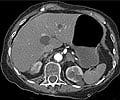One of the most effective means of reducing tobacco use is to raise tobacco prices, particularly among price-sensitive smokers such as young people and people with low incomes.

Transnational tobacco companies categorise cigarette brands into four price segments: premium, mid-price, economy, and ultra-low-price (ULP). A research report published online today in the journal Addiction reveals that while the real weighted average price of premium, mid-price and economy brands has increased gradually between 2001 and 2009, the real price of ULP cigarettes has barely changed since 2006, greatly reducing the effectiveness of cigarette taxes to deter smoking.
Tobacco companies have achieved this by overshifting taxes on their higher priced brands (increasing cigarette prices on top of the tax increases) and undershifting taxes on their ULP brands (absorbing tax increases so they are not passed on to the consumer) to keep the prices of their cheapest brands low. The former enables tobacco companies to increase their profits while the latter helps keep smokers in the market.
Unsurprisingly, the market share held by price-static ULP cigarettes doubled between 2006 and 2009, while the market share of the other three categories has fallen. But the rising prices of the more expensive brands means that, even with a falling market share, revenue from premium and mid-price brands has increased steadily since 2001.
Says lead author Anna Gilmore, Professor of Public Health & Health Foundation Clinician Scientist in the University of Bath's Department for Health and the UK Centre for Tobacco Control Studies, "Tobacco companies use their price changes to win two ways in the UK: when tobacco taxes increase each year, the tobacco companies hide their price increases on more expensive cigarettes behind the tax increases, making large profits from smokers who aren't bothered by price increases.
Simultaneously, they cut the prices of their cheapest cigarettes so that smokers who would be deterred by price hikes continue to smoke. Tobacco company revenues increase and fewer smokers quit. To increase the effectiveness of cigarette taxes, the UK government must find ways to narrow the price gap between the cheapest and most expensive cigarettes and prevent tobacco companies from discounting their cheapest brands."
Advertisement















